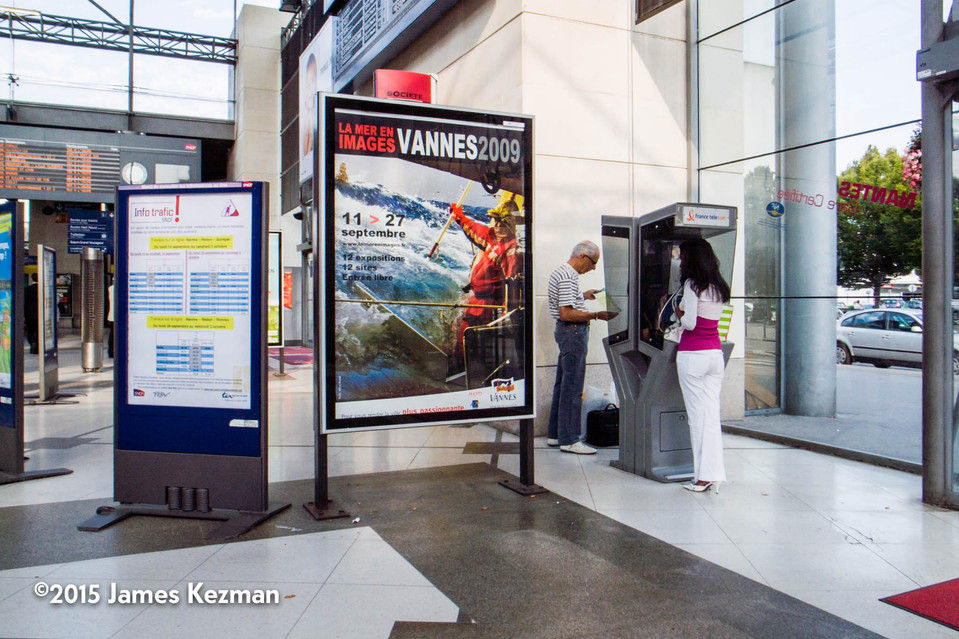The Ricoh GR II: Electric Boogaloo…?
June 18, 2015The GR series of film cameras was produced by Ricoh from the mid-90s until 2001. The GR1 was a revolutionary camera — Ricoh paired a point-and-shoot sized camera body with a fast, high-quality 28mm lens and a lot of cool features like fixed (i.e. snap) focusing, a small but powerful onboard flash, a +/-2 exposure compensation dial and a nearly silent electronic shutter. Snap focusing, where the camera set focal point at a certain distance from the focal plane automatically at start up, was worth the price of the camera alone. The GR1 was an instant hit with street photographers, most notably Daido Moriyama. Several iterations enhanced the basic design, culminating in the GR21 model that replaced the 28mm lens with a 21mm.
In 2005, Ricoh introduced the GR Digital (GR-D), the exact same concept as the GR1 applied to an 8 megapixel digital camera. The GR-D was almost exactly the same size and weight of the GR1. Many of the GR1’s best features came directly over to the GR-D. At the time, the GR-D was one of the few compact cameras that would capture RAW files and the first compact to use Adobe’s DNG file format. It was a dream to use — perfectly placed front and back dials let you rapidly adjust shutter speed and aperture. You could also, after a firmware upgrade, shoot in multiple aspect ratios, shoot in the stellar macro mode and capture AVI video files at a 320x240 resolution. (Remember…this was 2006…)
I bought the GR-D in 2006 in the “Creative Set” packaging that included an optical viewfinder, the 21mm conversion lens with lens hood, leather holster and a Ricoh-branded nylon neck strap. I loved the camera. Small, silent and fast, (In one way, more on that later…) the combination of the wide-angle lens and snap focus feature was excellent for quick street grabs. RAW capture gave you tremendous latitude when developing the images and the files looked fantastic when converted to monochrome.
The GR-D was not without its flaws. The RAW file writing process was *painfully* slow, taking around *twelve* seconds per shot while completely blocking camera operations. There was also no onboard optical viewfinder, forcing you to use the rear screen for everything and draining the battery quite quickly. Last but not least, the sensor could be very noisy, even a base ISO. The GR-D went through a total of four iterations before it was replaced by the back to basic-named Ricoh GR in 2013.
The new GR corrected what was the biggest flaw with the previous digital GRs — the sensor size. The 2013 GR body wrapped around a modern 16MP APS-C sized sensor. ISO range was greatly increased and sensor noise greatly decreased. The reviews were glowing. I almost bought the new GR, but ended up supporting Fuji and their innovative X system. Both Ricoh and Fuji seem to design cameras for *photographers* and not engineers. They both keep feature creep to a minimum and are very good about fixes bugs and adding new functionality through firmware upgrades. I really like what Fuji has done with the X System, but if I had a do over…
Around the time that the new GR was introduced, a friend of mine was looking for a compact camera for street shooting. He had been carrying around two APS-C Nikon bodies on his daily walks around Paris. The weight of the SLRs and their support equipment was starting to really bother him, so I sang the virtues of the GR series and loaned him my original GR-D for two weeks. Three days later he sent me a message saying that he was ready to return my camera. I was stunned — I had been certain that he would *love* the GR-D. We met for drinks and he returned my camera…then he pulled out his new GR! He had been so impressed with the functionality of the GR-D that he had bought the new camera two days later. You can see some of his GR shots on his website, Beban Photo.
Ricoh released the GR II on Wednesday, June 17th, 2015. This is an evolutionary update to the GR, much like how the GR1 and the GR-D were updated over a few years. The new version keeps the same rear LCD, lens, sensor and image processor while adding WiFi connectivity and iOS/Android apps for remote camera control, wireless control of Pentax flashes, better controls in movie mode and a host of in-camera image processing and creative filters. Connectivity is the buzz word here. I wonder if you can control multiple GRs from the app…that could be very interesting. Overall, a solid if unspectacular upgrade, but I’m more interested in the price drop on the old model… ;-D
The photo gallery below is a 2009 series called, “The September Project: Thirty days, four countries and one camera.” The four countries involved are Finland, France, Holland and the UK. All photos were taken with the first Ricoh GR Digital camera.






























